Speculation and Sensationalizing: Art and History through the Lens of CSI Archeology
Ruth Osborne
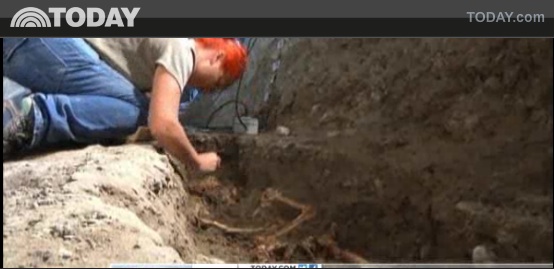
NBC coverage of Gherardini grave excavations in Florence, Italy. Courtesy: NBC Today show.
Over the weekend there occurred a surge in news reports about excavations at the graves of the husband and sons of Lisa Gherardini, the supposed subject of Leonardo’s Mona Lisa (1503-6, 1517).
NBC reported on Friday that a centuries-old crypt in Florence was opened to extract DNA from these skeletal remains in order to compare it with samples from an earlier excavation.[1] The purpose of this extensive project is to confirm that one of eight different tombs, unearthed in 2011, contains the body of the famed Mona Lisa; the same woman that has become the subject of public domain and many a pop culture parody.
What startles ArtWatch about this recent effort to unearth Mona Lisa is its chiefly speculative nature and invasive disregard for the individuals’ tombs in question (see also ArtWatch UK Director Michael Daley’s interview in NBC news segment). They are treated not as cultural property to be cared for, but instead to be ransacked in a quest to put “scientific” theories to test. In an NBC News segment, one reporter refers to this project as “masterpiece CSI.”
Two direct descendants of Lisa Gherardini, the Princesses Natalia and Irina Strozzi, perform for the newscasters as authenticators of this project: “At first the excavations bothered them. But now they too have caught the fascination.” The work is posed as a way to satiate public curiosity for “how she really looked” and why her smile “seems off.”[2] The emphasis here on an eye-opening and audience captivating discovery is symptomatic of the modern appetite for an authentic, film-like version of history.
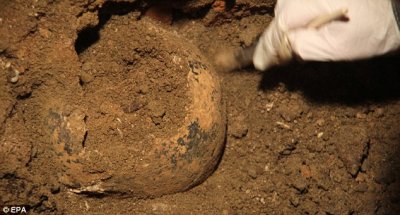
Skull presumed to be that of Lisa Gherardini. Courtesy: EPA.
Kristina Killgrove, a bioarcheologist at the University of West Florida, reveals to NBC the largely unscientific nature of the search for the “real” Mona Lisa: “This will probably bring in some tourist dollars, but other than confirming that this is the Mona Lisa, I don’t see any scholarly relevance to it…And these bones, as far as I can tell from the pictures, are in fairly poor condition.”[3] If the 500 year-old skeletons are so fragile, what authority decided it was worth the tourist revenue to open up a church floor and take apart these tombs?
The search for excavated remains of the Mona Lisa began in 2011 at the determination of Silvano Vinceti, neither an archeologist nor a scientist, but rather a television host and producer who also claimed to have opened the tombs of Caravaggio, Dante, and Petrarch. He follows “instincts” and “hunches” that lead him to seeking after these discoveries. Other pseudo-discoveries include uncovering symbols in Mona Lisa’s eyes and asserting the sitter was in fact a male model.[4] What does this say about Vinceti’s motivations? He contends to uncover the “truth,” but on what grounds and for what end? For the sake of revealing the spectacular to a public waiting with baited breath.
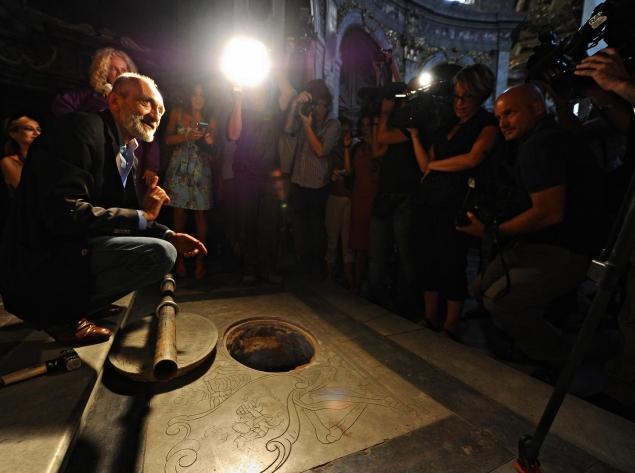
Silvano Vinceti above family tomb of Gherardinis. Courtesy: Maurizio Degl’Innocenti / EPA.
After much speculation, excavation, and detailed testing, we may be able to acquire a CGI image of the skeleton and see how it aligns with Leonardo’s painting. Meanwhile, a USA Today reporter admits, “there is the possibility that none of the skeletons are Lisa.”[5] Killgrove asserts that it is impossible to use facial reconstruction to truly identify the face of the Mona Lisa on skeletal remains: “what we cannot do is throw around ideas willy-nilly and claim that we can solve Dan Brown-style mysteries with our capital-S science.”[6] Vinceti’s claim certainly is far-fetched, but it has captured much the public and media attention, and that gets the dollars to fund such purportedly significant archeological projects. Yet another project in the works by another team of archeologists is set to exhume the skeletal remains of William Shakespeare.[7] Such speculation behind Vinceti’s and other projects tests out unscientific hypotheses at the expense of artistic and cultural heritage.
[1] “DNA Test to prove real identity of Mona Lisa,” TODAY. NBC News. 9 August 2013. http://www.today.com/video/today/52712209#52712209 (last visited 12 August 2013).
[2] “DNA Test to prove real identity of Mona Lisa,”; “Who is the real Mona Lisa?” USA Today. 9 August 2013
http://www.usatoday.com/story/news/usanow/2013/08/09/mona-lisa-dna-test-florence-excavation/2635177/ (last visited 12 August 2013).
[3] Alan Boyle, Science Editor, NBC News, “ ‘Mona Lisa’ skeleton and her kin’s remains are due for DNA testing,” NBC News. 9 August 2013. http://www.nbcnews.com/science/mona-lisa-skeleton-her-kins-remains-are-due-dna-testing-6C10874613 (last visited 12 August 2013); Kristina Killgrove, “Return of the Mona Lisa (or at least her bones…)” Powered by Osteons. 19 July 2012. http://www.poweredbyosteons.org/2012/07/return-of-mona-lisa-or-at-least-her.html (last visited 12 August 2013).
[4] “Next on CSI: Renaissance, Who Killed Caravaggio?” TV Host Silvano Vinceti Probes History’s Coldest Cases. WSJ.com. 10 March 2010, http://online.wsj.com/article/SB10001424052748704486504575098031390061888.html (last visited 13 August 2013).
[5] “Who is the real Mona Lisa?”
[6] Killgrove, “Return of the Mona Lisa (or at least her bones…).”
[7] Killgrove, “To toke or not to toke…Will Shakespeare’s bones tell us? Uh, no…” Powered by Osteons. 26 June 2011.
http://www.poweredbyosteons.org/2011/06/to-toke-or-not-to-toke-will.html (last visited 12 August 2013).


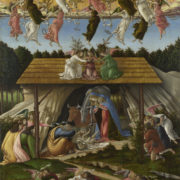
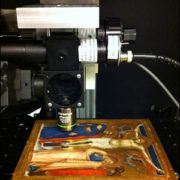
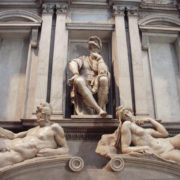

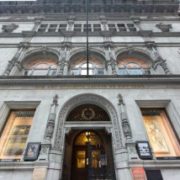
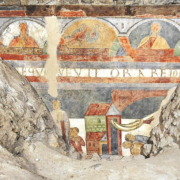
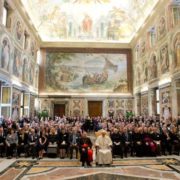


Leave a Reply
Want to join the discussion?Feel free to contribute!